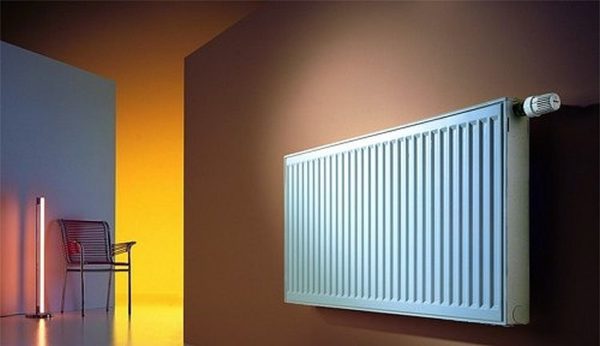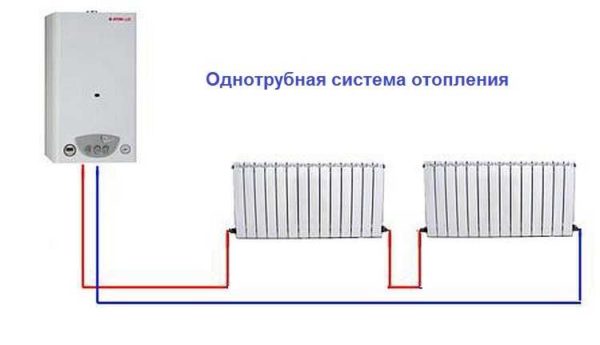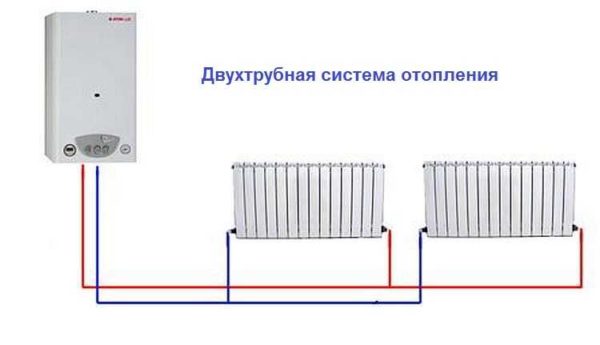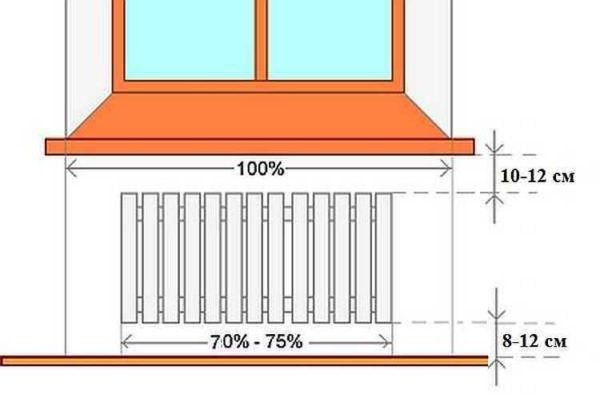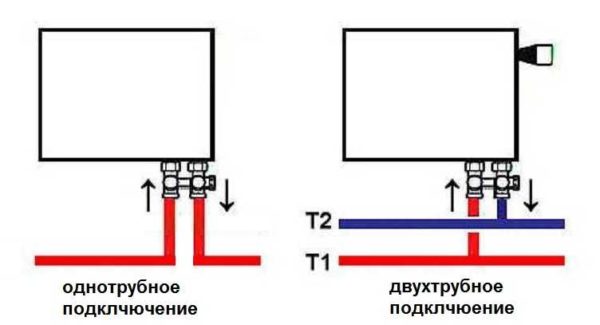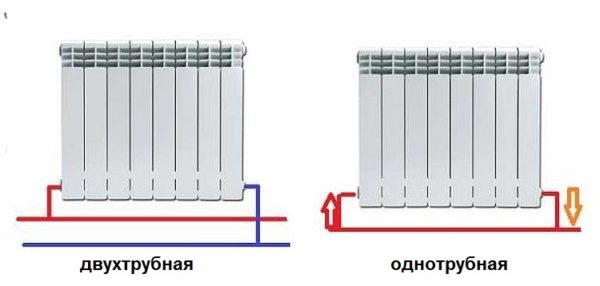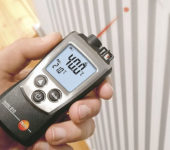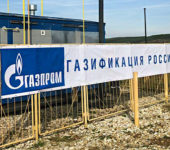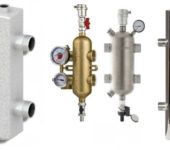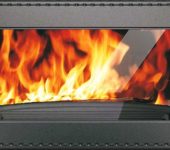Possible schemes for connecting heating radiators
To keep the house warm, it is important to correctly develop a heating scheme. One of the components of its effectiveness is the connection of heating radiators. It does not matter whether you are going to install cast iron, aluminum, bimetallic or steel radiators, it is important to choose the right way to connect them.
The content of the article
Types of heating systems
The amount of heat that a heating radiator will emit depends not least on the type of heating system and the selected type of connection. To choose the best option, you must first figure out what kind of heating systems are and how they differ.
Single pipe
A single pipe heating system is the most economical option in terms of installation costs. Therefore, it is this type of wiring that is preferred in multi-storey buildings, although such a system is far from uncommon in private ones. With this scheme, the radiators are connected to the line in series and the coolant first passes through one heating part, then enters the inlet of the second, and so on. The output of the last radiator is connected to the inlet of the heating boiler or to the riser in high-rise buildings.
The disadvantage of this wiring method is the impossibility of adjusting the heat transfer of the radiators. By installing a regulator on any of the radiators, you will regulate the rest of the system. The second significant drawback is the different temperature of the coolant for different radiators. Those that are closer to the boiler heat up very well, those farther - get colder. This is a consequence of the series connection of heating radiators.
Two-pipe wiring
The two-pipe heating system differs in that it has two pipelines - supply and return. Each radiator is connected to both, that is, it turns out that all radiators are connected to the system in parallel. This is good because a coolant of the same temperature is supplied to the input of each of them. The second positive point is that a thermostat can be installed on each of the radiators and with its help you can change the amount of heat that it emits.
The disadvantage of such a system is that the number of pipes in the system is almost twice as large. But the system can be easily balanced.
Read more about heating systems for a private house here.
Where to install radiators
Traditionally, heating radiators are placed under windows and this is no coincidence. The rising flow of warm air cuts off the cold air that comes from the windows. In addition, warm air heats the glass, preventing condensation from forming on them. Only for this it is necessary that the radiator occupies at least 70% of the width of the window opening. Only in this way the window will not fog up. Therefore, when choosing the power of radiators, select it so that the width of the entire radiator is not less than a given value.
In addition, it is necessary to correctly select the height of the radiator and the place for its placement under the window. It must be placed so that the distance to the floor is in the region of 8-12 cm. If it is lowered below, it will be inconvenient to clean, if raised higher, it will be cold for the feet. The distance to the window sill is also regulated - it should be 10-12 cm. In this case, warm air will freely go around the barrier - the window sill - and rise along the window glass.
And the last distance that must be maintained when connecting heating radiators is the distance to the wall. It should be 3-5 cm. In this case, ascending streams of warm air will rise along the rear wall of the radiator, the heating rate of the room will improve.
Read here how to mount and connect heating radiators with your own hands.
Radiator connection diagrams
How well the radiators heat up depends on how the coolant is supplied to them. There are more and less effective options.
Bottom connection radiators
All heating radiators have two types of connection - side and bottom. There can be no discrepancies with the bottom connection. There are only two pipes - inlet and outlet. Accordingly, on the one hand, the coolant is supplied to the radiator, on the other, it is discharged.
Specifically, where to connect the feed, and where the reverse is written in the installation instructions, which must be available.
Radiators with side connection
With lateral connection, there are much more options: here the supply and return pipelines can be connected into two nozzles, respectively, there are four options.
Option number 1. Diagonal connection
Such a connection of heating radiators is considered the most effective, it is taken as a standard, and this is how manufacturers test their heating devices and the data in the passport on thermal power - for such a connection. All other types of connection give off heat less efficiently.
This is because when the batteries are diagonally connected, the hot coolant is supplied to the upper inlet from one side, passes through the entire radiator and exits from the opposite, lower side.
Option number 2. Unilateral
As the name implies, pipelines are connected on one side - supply from above, return - from below. This option is convenient when the riser runs to the side of the heater, which is often the case in apartments, because this type of connection usually prevails. When the coolant is supplied from below, such a scheme is rarely used - it is not very convenient to place pipes.
With such a connection of radiators, the heating efficiency is only slightly lower - by 2%. But this is only if there are few sections in the radiators - no more than 10. With a longer battery, its farthest from the edge will not heat well or even remain cold. In panel radiators, to solve the problem, flow extenders are installed - tubes that bring the coolant a little further than the middle. The same devices can be installed in aluminum or bimetallic radiators, while improving heat transfer.
Option number 3. Bottom or saddle connection
Of all the options, the saddle connection of heating radiators is the least efficient. The losses are approximately 12-14%. But this option is the most inconspicuous - pipes are usually laid on the floor or under it, and this method is the most optimal from the point of view of aesthetics. And so that losses do not affect the temperature in the room, you can take a radiator a little more powerful than required.
In systems with natural circulation, this type of connection should not be done, but with a pump it works well. In some cases, it is not even worse than lateral. It's just that at a certain speed of movement of the coolant, vortex flows arise, the entire surface heats up, and heat transfer increases. These phenomena have not yet been fully studied, therefore it is still impossible to predict the behavior of the coolant.

